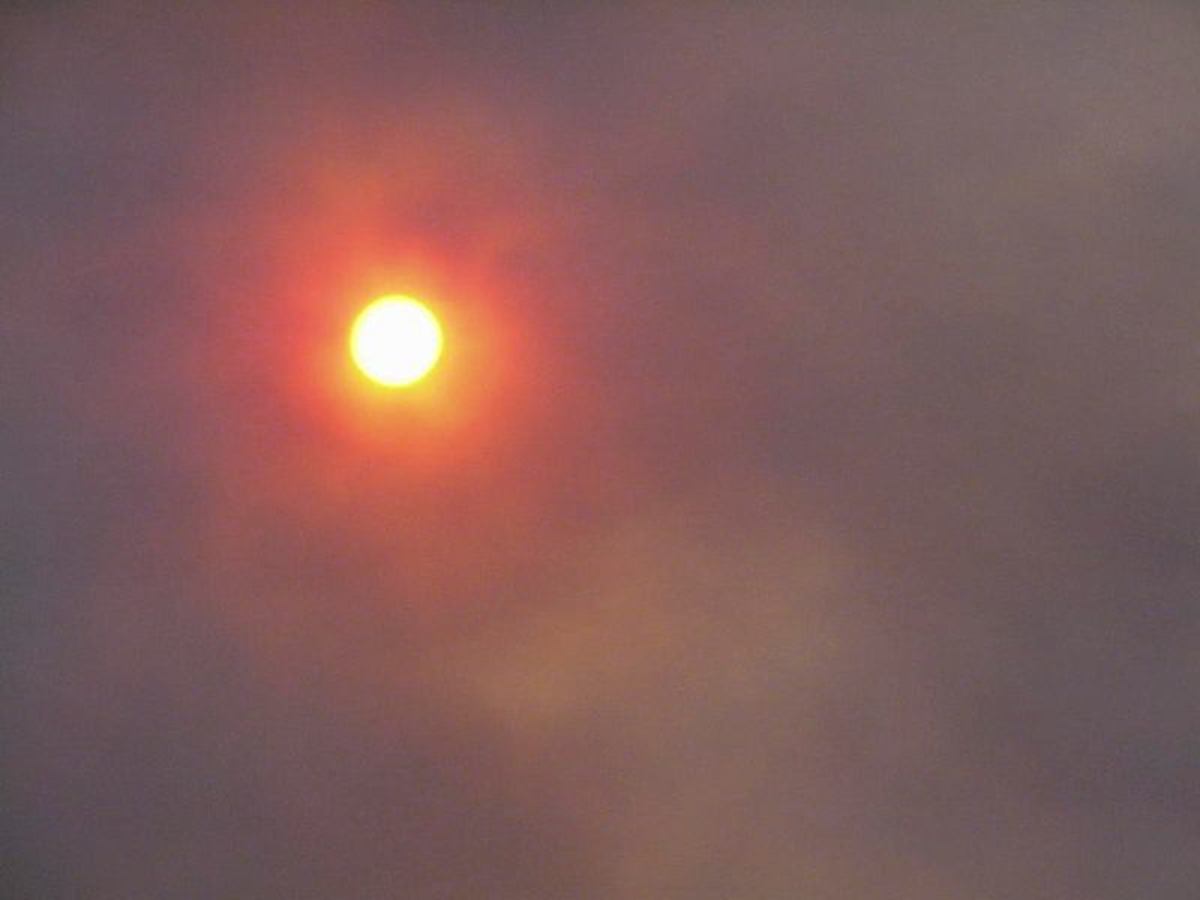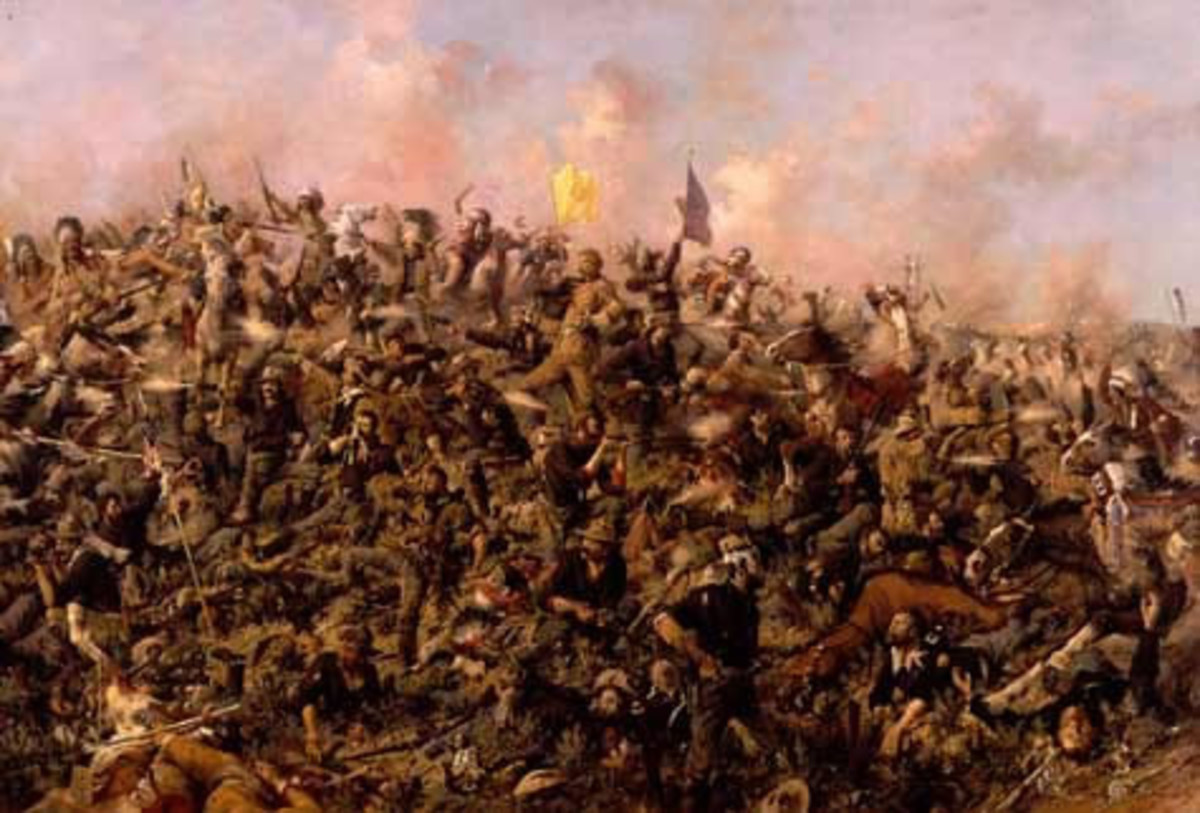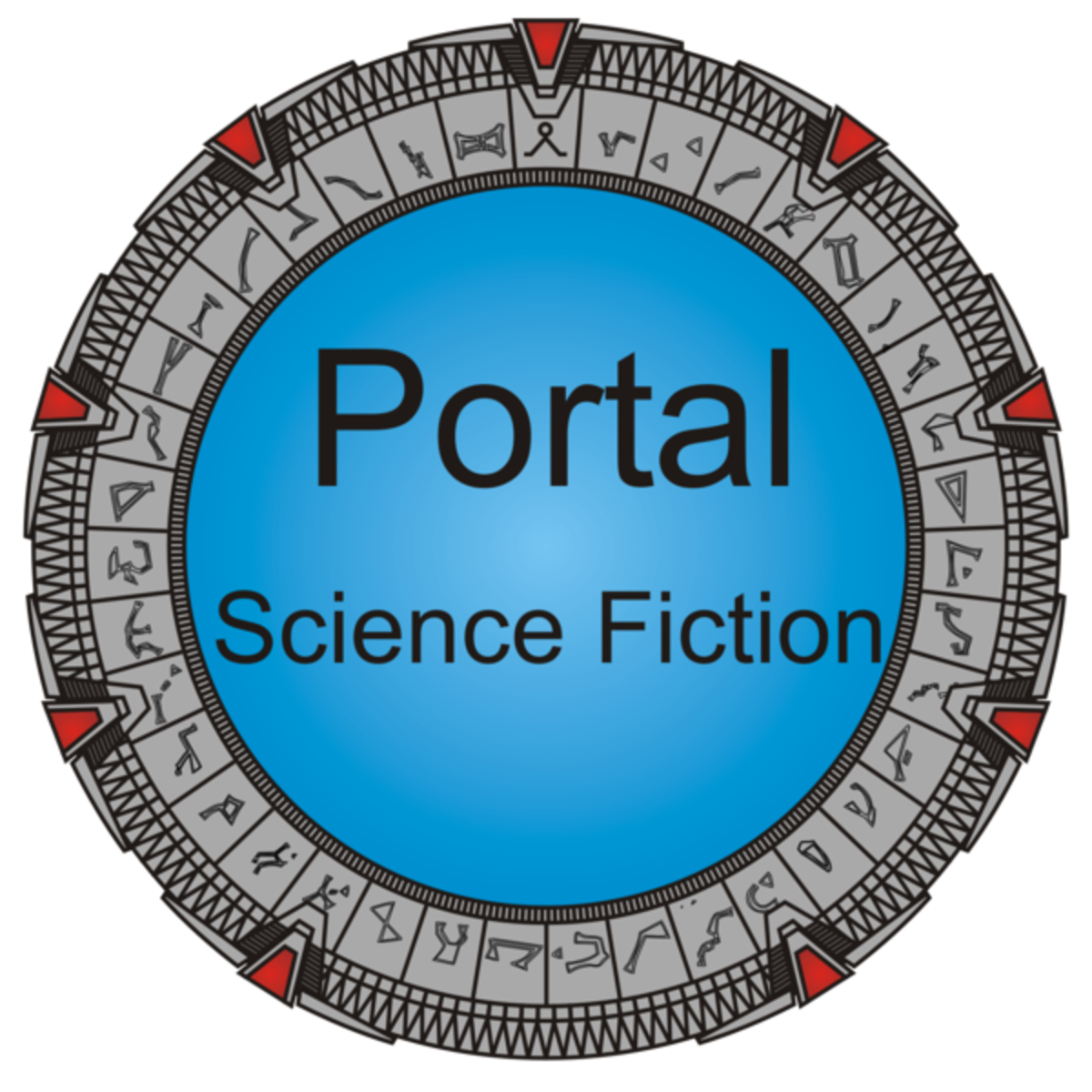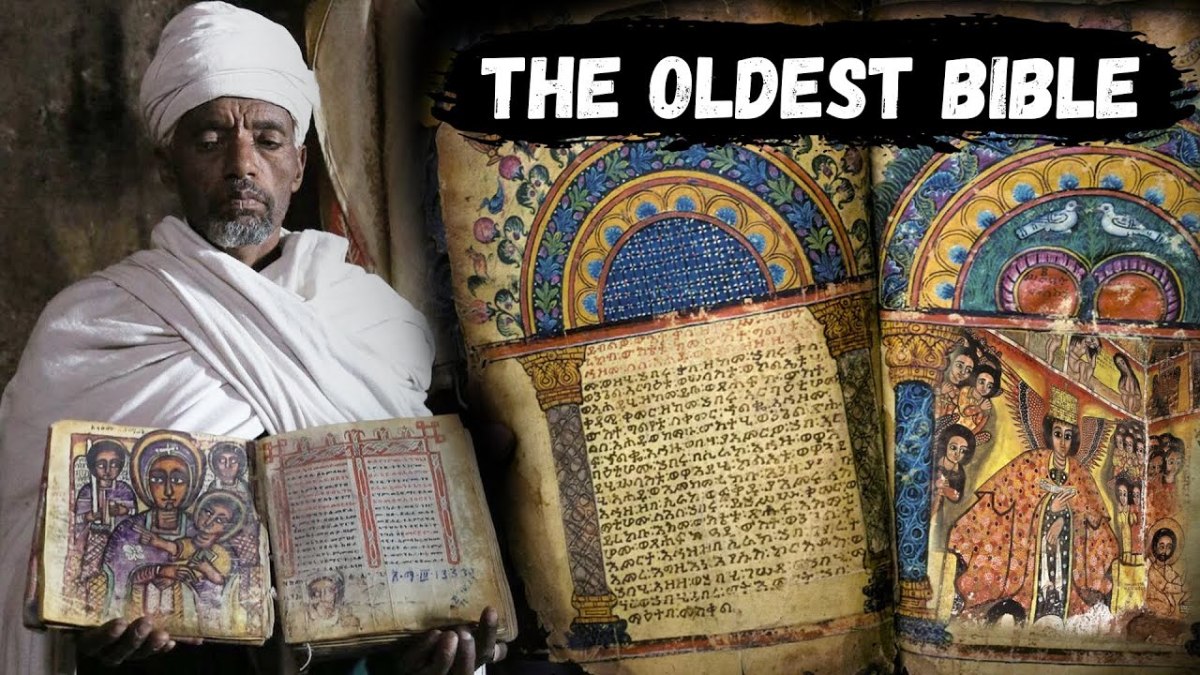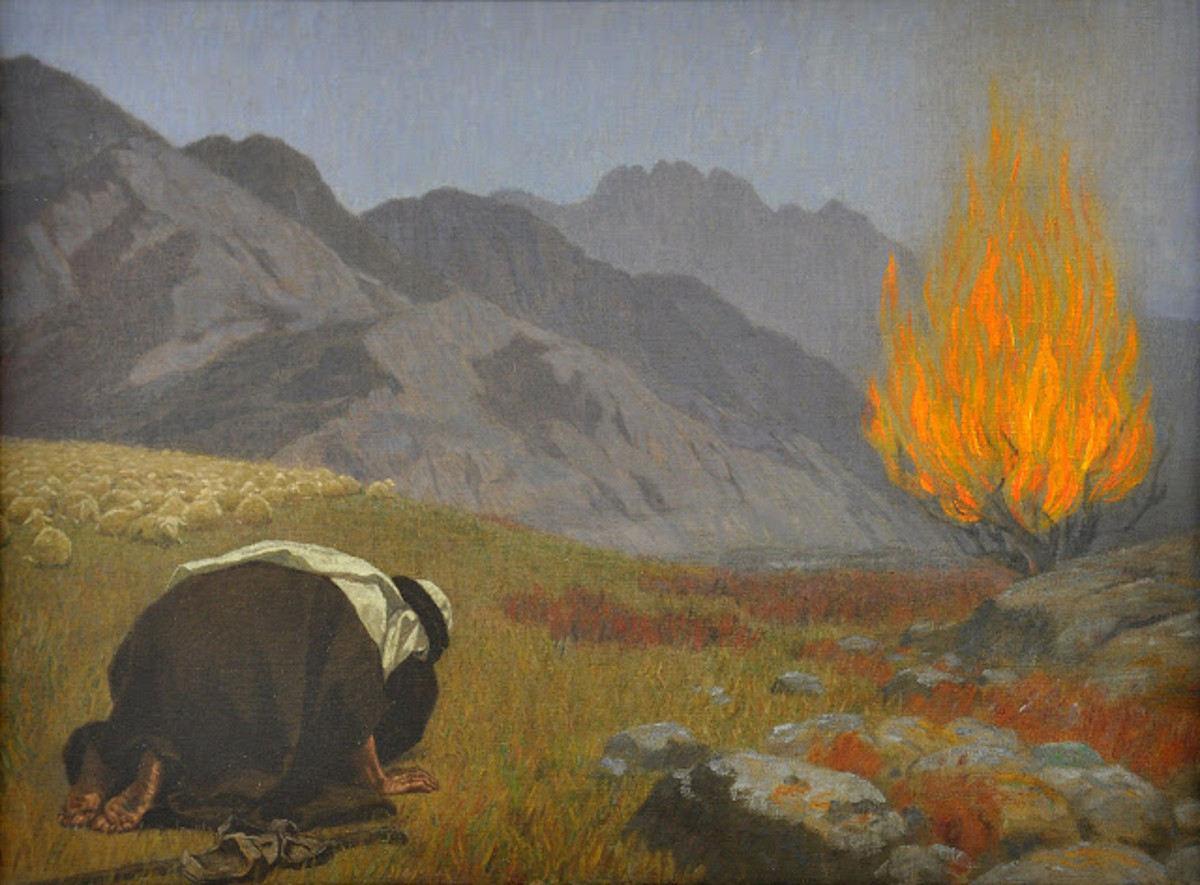The Central Idea in Revelation's Tribulation Chapters
The events foretold of in Revelation, the last book of the New Testament, can be difficult to put into a chronological order. This hub article and subsequent ones look at various keys to determining how to do this. John—the recorder of these visions he saw—used a biblical style of writing that when understood provide clues to this event time-line.
In my hub article The Four Time Stages in Revelation, I asked why the event of harvesting of the earth—found in chapter 14 of Revelation—is put on a chart in all caps. This hub article is where I explain the reason.
I explain the reason by looking at how we can tell the reaping of earth's harvest in 14:14-19 is the central idea; where the turning point occurs in the many events depicted in Revelation.
Chiastic structure
Chiastic structure is used particularly in Greek and Latin literature. A reversed order of the grammar in two or more clauses in a sentence will yield a chiasmus.
Example 1
In the Old Testament book of Jonah 1:3, for example, it says,
to Tarshish from the presence of the LORD
>> down
>>>> to Tarshish
>> down
to Tarshish from the presence of the LORD
(The ">" is my addition in order to space a little more to the right.)
The earth is reaped
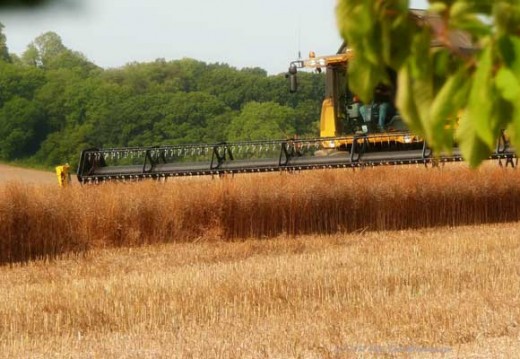
Instead of going to Nineveh, Jonah proceeds in the opposite direction—to Tarsus! This was the emphasis of this chiasmus.
Example 2
The chiastic structure can be labeled, like the key words in this example from Isaiah 6:10:
A heart
> B ears
>> C eyes
>> C1 eyes
> B1 ears
A1 heart
(The ">" is added in order to space a little more to the right.)
This chiastic structure, an inverted parallelism, is used in order to make a larger point. It draws attention to and emphasizes the central idea where the inflection or turning point has occurred. In the above example the central idea is the people’s blindness (or lack of understanding).
The whole structure acts like a frame to prepare the reader for the most important message.
Part of this chiasmus is suggested in this book
A Large Chiasmus in Revelation
The Tribulation Stage of chapters 4-19 in Revelation is so long, it is hard to tell what the most important part of its message is. There is, however, a chiasmic structure that John used in chapters 12-19 to communicate this and emphasize the central idea and turning point.
This chiasmus in Revelation runs from 12:3 to 20:2, and it shows:
- One side of the parallelism depicts the rise of the evil Babylonian empire, and the other its' demise or fall.
- Rows G and G1are what these parallels point to; the most important event—the weeding out of the wicked from among the righteous (Matthew 13:30; Joel 3:13). This contrasting pair depicts the reaping and gathering of earth's two ripe harvests, the ripened wheat and the ripened grapes. In the following these paired events are framed in a rectangle.
Chiasmus in Revelation 12:3 to 20:2 (click on the chart)
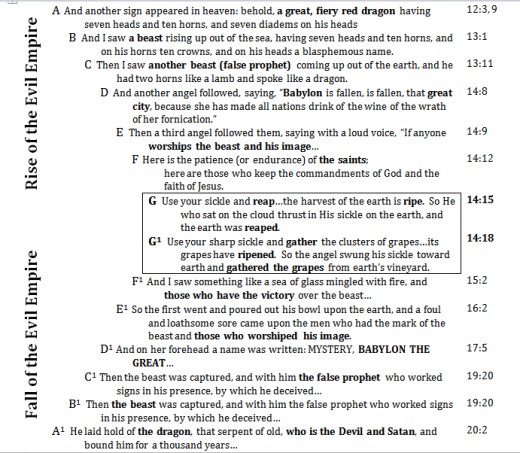
New Vision Transitions
There is another biblical style of writing was used by John that gives us a clue. The Greek phrase metatauta ‘after this’ (I saw/looked/heard) is used in Revelation to indicate that a new vision is being introduced.
Knowing this, we can see that each of the series of seven Seals, Trumpets and Vials are in a separate vision. This is illustrated as follows.
'After this I ...' begins each new vision in Revelation
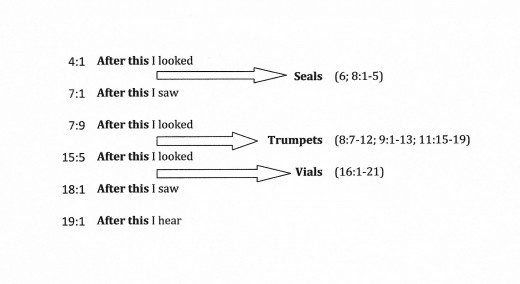
Some points to note:
- The reaping in chapter 14 of Revelation is also foretold by Jesus in Matthew 13:24-30, 37-43; 24:31.
- The plagues on the Pharaoh of Egypt told of in the book of Exodus affected the Israelites too, but the Egyptians more (Exodus 9:4, 26). In the same way, Revelation tells us God will exact judgment on both Babylon and the world, but Babylon more.
- We are not to be taken out of the world, but be protected from being harmed by the evil one (John 17:14-18). This is similar to the Israelites being protected by sacrificial blood from the plagues that hit the Pharaoh and the Egyptians.
- The victors are those who endure (1John 5:3-5). In Revelation 2-3, the Greek word vikao is ‘to win victory over, victor, to conquer and is used again in 15:2, as Babylon starts to fall.
Seals, Trumpets and Vials
I once thought that the separate visions of the Trumpets (in chapters 8-9) and Vials (in chapter 16) take place at the same time, in tandem. This would mean that
- God would exact His judgment on the world and on Babylon simultaneously. (This is the “Day” of God’s wrath.)
- A delivery of judgments in tandem would reflect the manner God used in Exodus 8:22-23, when he made a distinction between the Egyptians and the Hebrews. He did not send the plague of flies (and the other plagues that followed) to Goshen, where his people resided, that he sent on the rest of Egypt.
However, I now believe Revelation makes more sense when the Trumpets and Vials are not seen as simultaneous. Still, a pattern seen in Exodus applies, but a bit different one.
The first three plagues in Egypt affected everyone, Egyptians and Hebrews alike. This relates to the seven Seals in Revelation.
The fourth plague in Egypt, however, is where a distinction begins; made between the two peoples. We see in Revelation this distinction begins after the Seals, when before the Trumpet judgments begin, in chapter 7, just the "slaves of our God" are sealed against destruction.
Finally, the tenth plague in Egypt, death of the firstborns, a distinction is then made. It required blood on the Hebrew doorposts in order for God, when he saw it, to pass over and so not destroy them when he struck the land of Egypt (Exodus 12:13). A similar distinction we find is made in Revelation. John is told that the vast multitude he sees in heaven, standing before the throne and the Lamb, are those come from the great tribulation whose robes have been washed white in the blood of the Lamb.
Study Question
Can you find any other significant chiastic structures in Revelation? I challenge you to read through it with this question in mind.
Can you find any other chiastic structures used in the book of Revelation?
© 2011 Deidre Shelden





